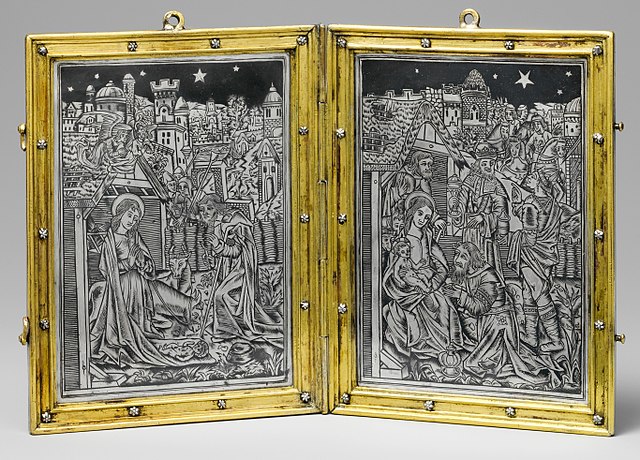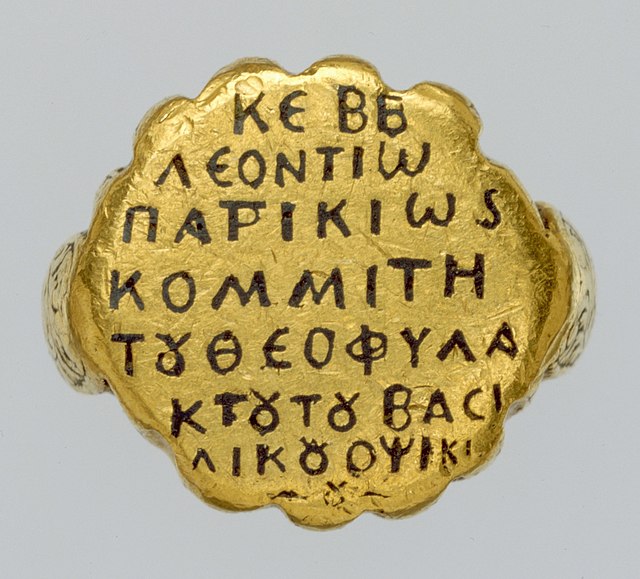Niello is a black mixture, usually of sulphur, copper, silver, and lead, used as an inlay on engraved or etched metal, especially silver. It is added as a powder or paste, then fired until it melts or at least softens, and flows or is pushed into the engraved lines in the metal. It hardens and blackens when cool, and the niello on the flat surface is polished off to show the filled lines in black, contrasting with the polished metal around it. It may also be used with other metalworking techniques to cover larger areas, as seen in the sky in the diptych illustrated here. The metal where niello is to be placed is often roughened to provide a key. In many cases, especially in objects that have been buried underground, where the niello is now lost, the roughened surface indicates that it was once there.
Diptych with Nativity and Adoration, silver and niello, gilt-bronze frame, Paris, c. 1500, The Cloisters
Byzantine gold ring with niello inscription "Lord help Leontius, Patrician and Count of imperial Obsikion guarded by God", c. 1000 AD
Detail of the bronze "Lion Hunt Dagger" with niello, gold and silver from Grave Circle A, Mycenae, c. 1550 BC.
Detail of a Late Roman silver-gilt buckle from Gaul, c. 400 AD
Inlay covers a range of techniques in sculpture and the decorative arts for inserting pieces of contrasting, often colored materials into depressions in a base object to form ornament or pictures that normally are flush with the matrix. A great range of materials have been used both for the base or matrix and for the inlays inserted into it. Inlay is commonly used in the production of decorative furniture, where pieces of colored wood, precious metals or even diamonds are inserted into the surface of the carcass using various matrices including clear coats and varnishes. Lutherie inlays are frequently used as decoration and marking on musical instruments, particularly the smaller strings.
Example of Boulle work inlay using tortoiseshell in mottled red, brass and pewter
Boulle work showing the use of pewter (center) and the 'depth' given by tortoiseshell in the background. Brass inlay is on the right and left.
Mother of pearl inlay into walnut burl on a customised Fender Stratocaster.
Inlay (ivory, red sandalwood, copper) on wooden casket








